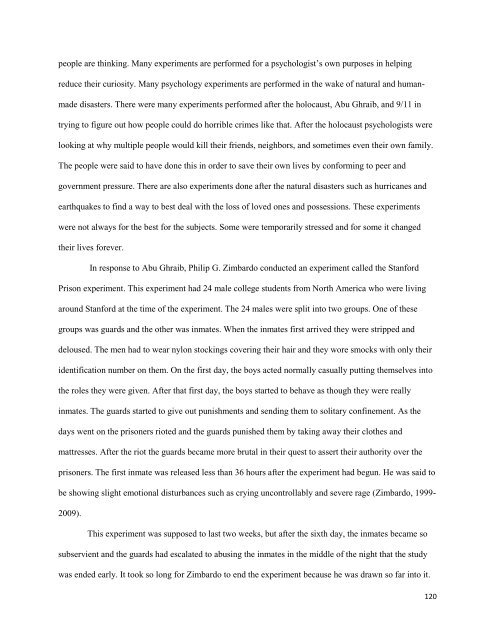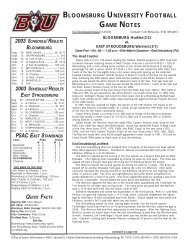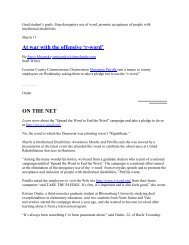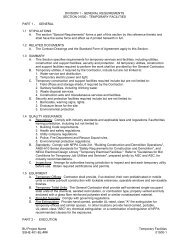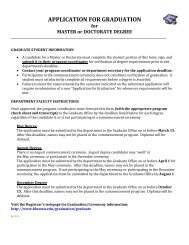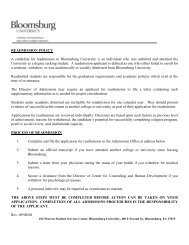Human Rights at Home and Abroad: Past, Present, and Future
Human Rights at Home and Abroad: Past, Present, and Future
Human Rights at Home and Abroad: Past, Present, and Future
Create successful ePaper yourself
Turn your PDF publications into a flip-book with our unique Google optimized e-Paper software.
people are thinking. Many experiments are performed for a psychologist‘s own purposes in helping<br />
reduce their curiosity. Many psychology experiments are performed in the wake of n<strong>at</strong>ural <strong>and</strong> human-<br />
made disasters. There were many experiments performed after the holocaust, Abu Ghraib, <strong>and</strong> 9/11 in<br />
trying to figure out how people could do horrible crimes like th<strong>at</strong>. After the holocaust psychologists were<br />
looking <strong>at</strong> why multiple people would kill their friends, neighbors, <strong>and</strong> sometimes even their own family.<br />
The people were said to have done this in order to save their own lives by conforming to peer <strong>and</strong><br />
government pressure. There are also experiments done after the n<strong>at</strong>ural disasters such as hurricanes <strong>and</strong><br />
earthquakes to find a way to best deal with the loss of loved ones <strong>and</strong> possessions. These experiments<br />
were not always for the best for the subjects. Some were temporarily stressed <strong>and</strong> for some it changed<br />
their lives forever.<br />
In response to Abu Ghraib, Philip G. Zimbardo conducted an experiment called the Stanford<br />
Prison experiment. This experiment had 24 male college students from North America who were living<br />
around Stanford <strong>at</strong> the time of the experiment. The 24 males were split into two groups. One of these<br />
groups was guards <strong>and</strong> the other was inm<strong>at</strong>es. When the inm<strong>at</strong>es first arrived they were stripped <strong>and</strong><br />
deloused. The men had to wear nylon stockings covering their hair <strong>and</strong> they wore smocks with only their<br />
identific<strong>at</strong>ion number on them. On the first day, the boys acted normally casually putting themselves into<br />
the roles they were given. After th<strong>at</strong> first day, the boys started to behave as though they were really<br />
inm<strong>at</strong>es. The guards started to give out punishments <strong>and</strong> sending them to solitary confinement. As the<br />
days went on the prisoners rioted <strong>and</strong> the guards punished them by taking away their clothes <strong>and</strong><br />
m<strong>at</strong>tresses. After the riot the guards became more brutal in their quest to assert their authority over the<br />
prisoners. The first inm<strong>at</strong>e was released less than 36 hours after the experiment had begun. He was said to<br />
be showing slight emotional disturbances such as crying uncontrollably <strong>and</strong> severe rage (Zimbardo, 1999-<br />
2009).<br />
This experiment was supposed to last two weeks, but after the sixth day, the inm<strong>at</strong>es became so<br />
subservient <strong>and</strong> the guards had escal<strong>at</strong>ed to abusing the inm<strong>at</strong>es in the middle of the night th<strong>at</strong> the study<br />
was ended early. It took so long for Zimbardo to end the experiment because he was drawn so far into it.<br />
120


